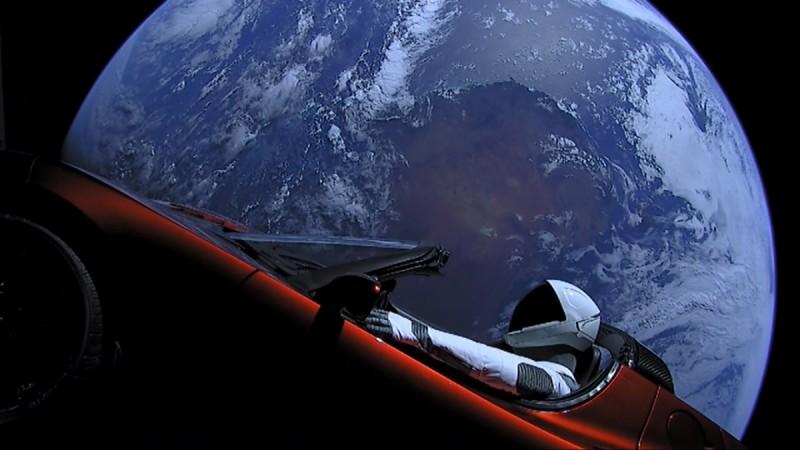
With the launch of Falcon Heavy, the world's most powerful rocket, Elon Musk's SpaceX raised many eyebrows. The successful launch of the rocket was indeed a significant achievement by Musk's aerospace company, but a red Tesla Roadster the rocket was carrying as its payload had also prompted many to ask why to send a sports car into deep space.
But since it has already happened, it makes more sense to ask what will happen to the electric vehicle in the days to come. Will it keep on drifting somewhere in the outer space? Or, will the car and the mannequin driver, named "Starman," make it to Mars orbit?
According to experts, it won't be an easy journey for the Tesla Roadster and Starman as they will have to face micrometeorites and dangerous cosmic radiation in outer space.
While collisions with micrometeorites and other space junk could leave the car with dents and scars on its surface, the real threat comes from space radiation that can literally tear the car apart, along with the mannequin.
The extreme radiation of the sun and cosmic rays cannot harm humans and other objects on Earth as they are protected by powerful magnetic field and the atmosphere -- defending shields that don't exist in space.
"All of the organics will be subjected to degradation by the various kinds of radiation that you will run into there," William Carroll, a chemist at Indiana University and expert in plastics and organic molecules, told LiveScience.
All the leathers, fabrics and plastics used in the car, as well as its carbon-fiber frame, are made of carbon-carbon bonds and carbon-hydrogen bonds. And once these materials are exposed to stellar radiation, its energy can cause those bonds to snap, tearing the car to bits, according to Carroll.
"Those organics, in that environment, I wouldn't give them a year," Carroll said.

Falcon Heavy, which was lifted off from the same launch pad that NASA used for the Apollo 11 mission, has the capacity to lift nearly 64 metric tons into space. That weight is greater than that of a 737 jetliner loaded with passengers, crew, luggage, and fuel.
"Falcon Heavy was designed from the outset to carry humans into space and restores the possibility of flying missions with crew to the Moon or Mars," SpaceX said on its website.

















